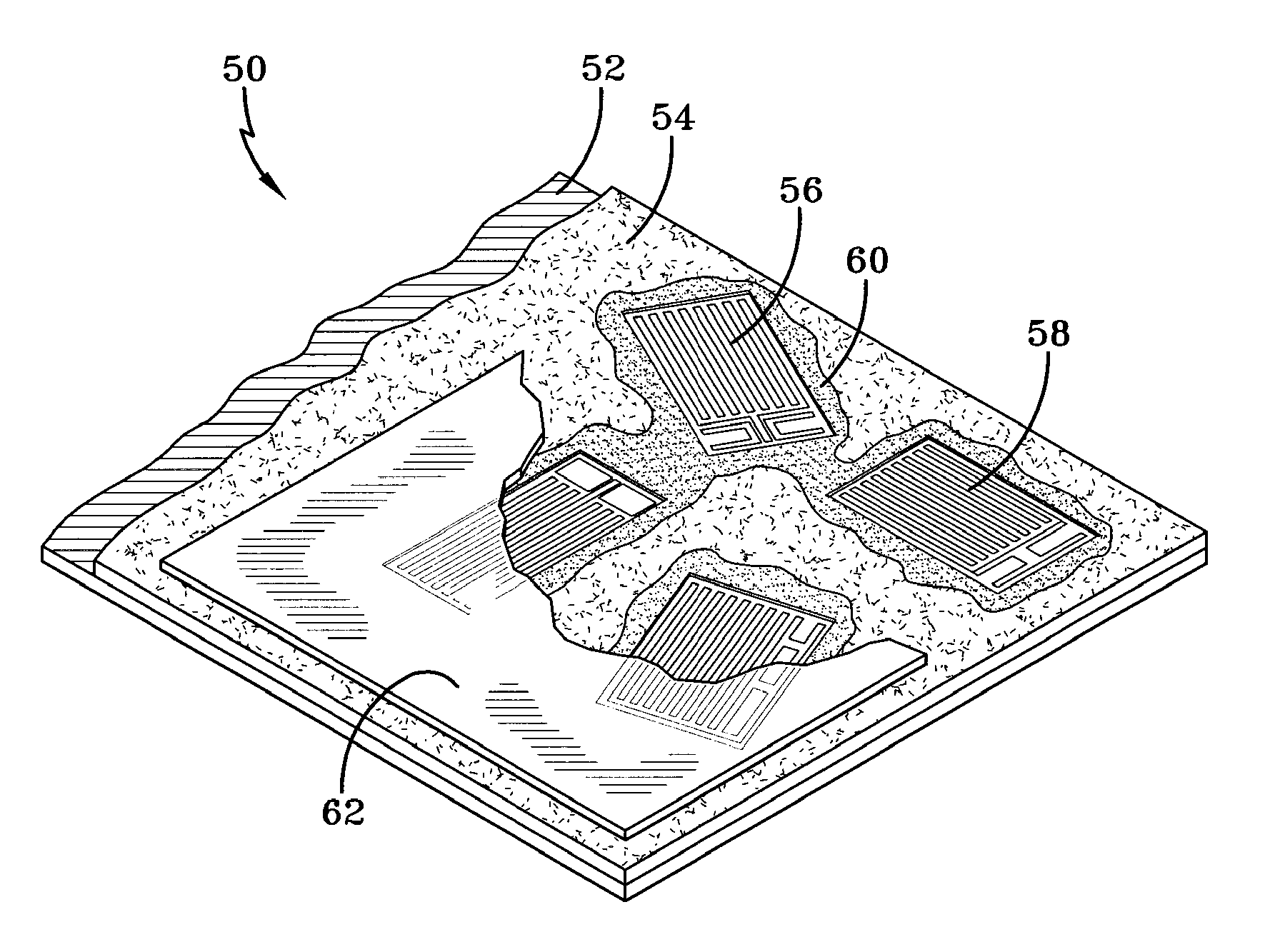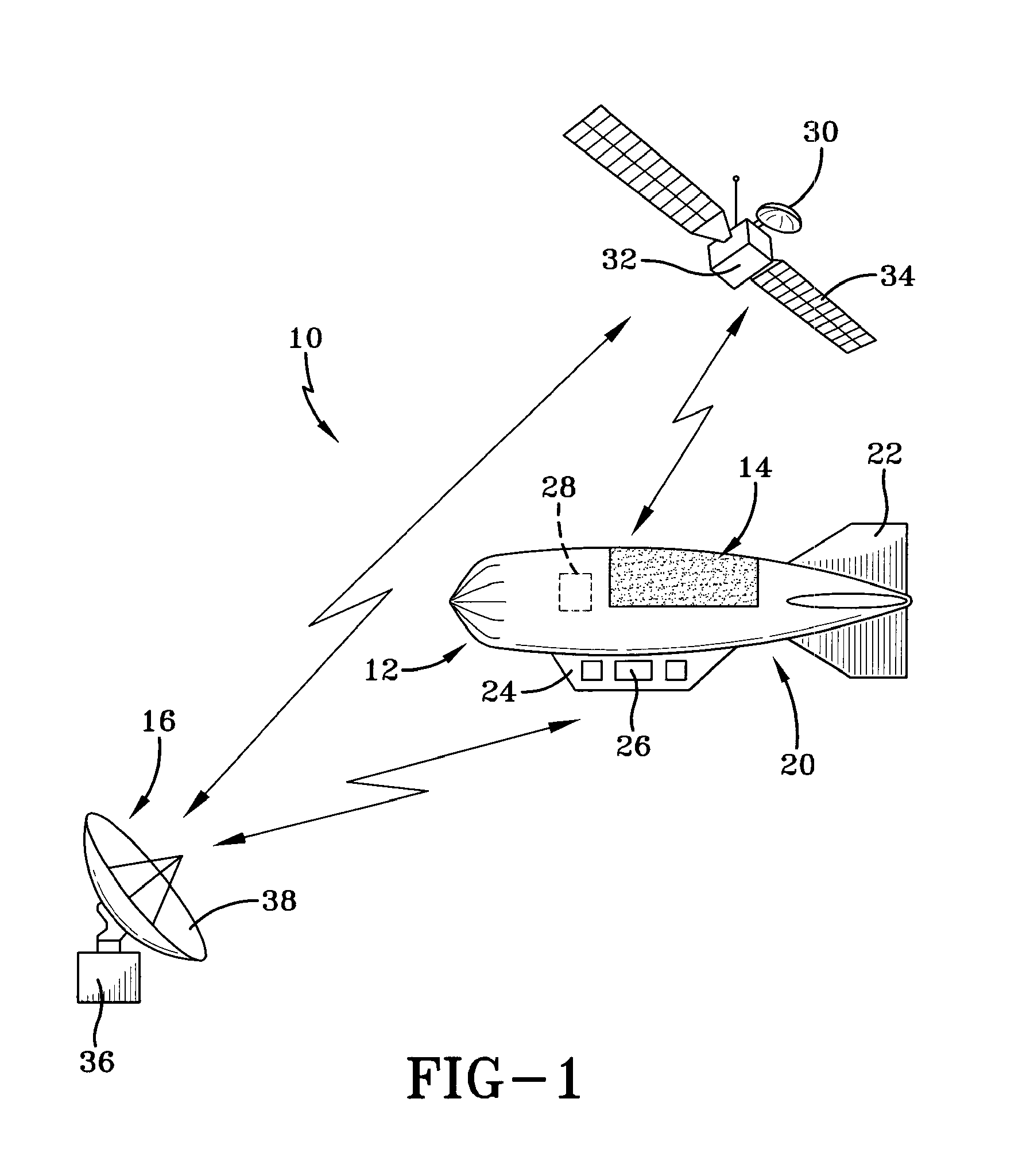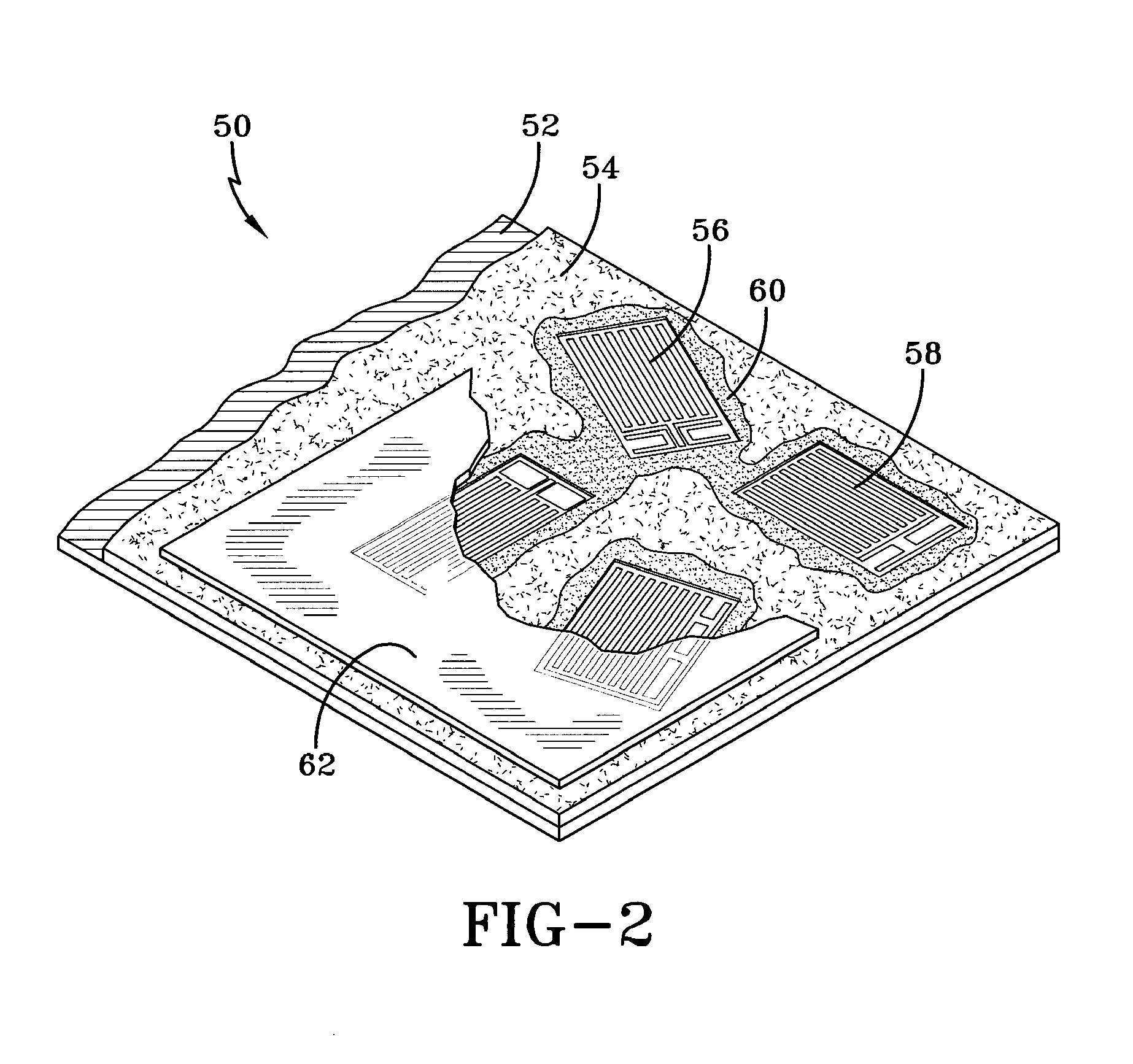Laminate structure with electronic devices and method
- Summary
- Abstract
- Description
- Claims
- Application Information
AI Technical Summary
Benefits of technology
Problems solved by technology
Method used
Image
Examples
Embodiment Construction
[0013]FIG. 1 is a schematic illustration of the transmission system 10 according to an embodiment of the present invention. Transmission system 10 includes a lighter-than-air vehicle 12 which communicates with a satellite 14 and an earth-based receiving station 16. Lighter-than-air vehicle 12 includes a hull 20, and optionally, at least one stabilizing fin 22. Lighter-than-air vehicle 12 also includes a payload 24 which may carry information and communication processing equipment 26 for surveillance and weather monitoring, or onboard power supply, for example. The lighter-than-air vehicle 12 can remain aloft for indefinite periods of time via an onboard power supply and devices for replenishing the power supply without returning to the earth. As seen in FIG. 1, a lighter-than-air vehicle 10 consists of a flexible fabric laminate skin 12 which contains a gas, such as helium, to provide lift for the LTA vehicle. Affixed to the top surface of the LTA vehicle are photovoltaic cells 18 w...
PUM
| Property | Measurement | Unit |
|---|---|---|
| Weight | aaaaa | aaaaa |
| Structure | aaaaa | aaaaa |
| Flexibility | aaaaa | aaaaa |
Abstract
Description
Claims
Application Information
 Login to View More
Login to View More - R&D
- Intellectual Property
- Life Sciences
- Materials
- Tech Scout
- Unparalleled Data Quality
- Higher Quality Content
- 60% Fewer Hallucinations
Browse by: Latest US Patents, China's latest patents, Technical Efficacy Thesaurus, Application Domain, Technology Topic, Popular Technical Reports.
© 2025 PatSnap. All rights reserved.Legal|Privacy policy|Modern Slavery Act Transparency Statement|Sitemap|About US| Contact US: help@patsnap.com



